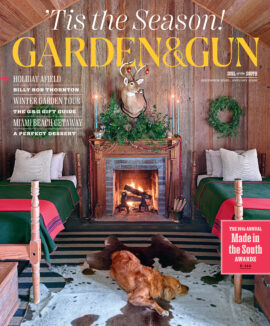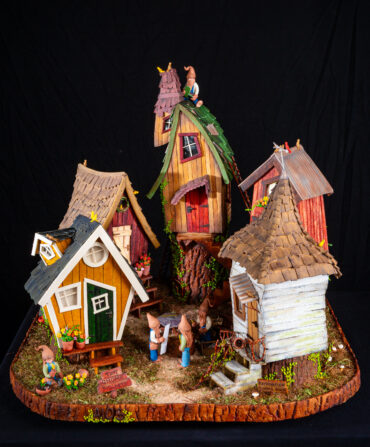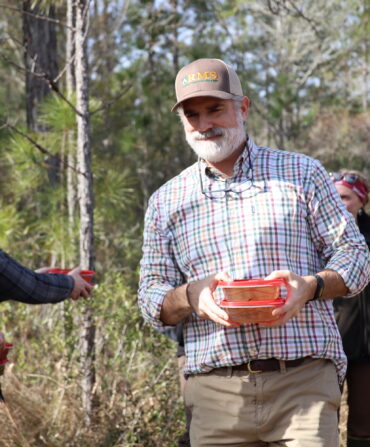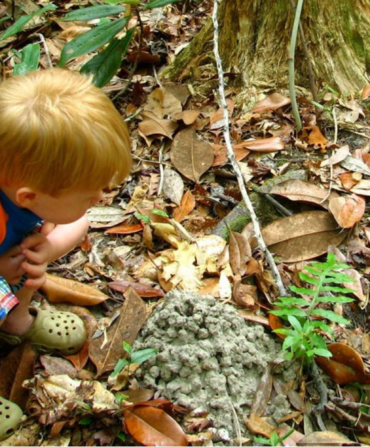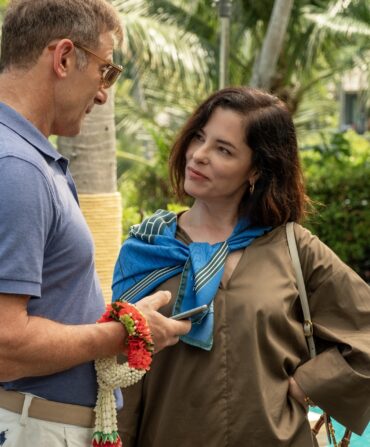Alabama
Fish Fly
Outdoors
From April 25 through 27, hundreds of fish flingers will once again launch mullet into the sky and across the Florida-Alabama state line, hoping to beat the record of 189 feet and eight inches at the Flora-Bama Interstate Mullet Toss. The Pensacola, Florida, bar of that name hosted its first toss forty years ago in 1985, and nowadays, the annual party’s not over until some local alligators also get a taste of the action. As of last year, the Flora-Bama donates the leftover fish to the 731 gators at Alligator Alley in nearby Summerdale, Alabama. “With the alligators, it’s more about accuracy than distance,” says the sanctuary’s owner, Wes Moore. Visitors can see the gators feast three times a day, on mullet and wild feral hog, starting in mid-March. “I like my mullet fried with a side of hush puppies,” Moore says. “They like theirs extremely rare.”
Arkansas
Sake Summit
Drinks
The Hot Springs–based company Origami Sake makes elevated use of two Natural State ingredients: rice and water. “Arkansas is the number one rice producer in the United States,” says Ben Bell, Origami’s cofounder, “and the mineral water of Hot Springs has been famous for centuries.” That water also resulted in a connection with Japan—Hot Springs and Hanamaki, both small mountain spa towns with natural thermal springs, have enjoyed a three-decade sister-city relationship. Through that alliance, Bell spent two years studying sake brewing at the Japanese brewery Nanbu Bijin before opening Origami in 2023. Already, his Arkansas sake is taking home awards, and for the second year in a row, Hot Springs will host the American Craft Sake Festival (April 12), which convenes all thirty-one U.S. sake brewers, plus a few from Japan. Origami will host public tours of its solar-powered facility, as well as a night of tastings. The broader ties to Japan will be on display, too—the event coincides with Hot Springs’ annual Arkansas Cherry Blossom Festival, which features sumo wrestling demonstrations, haiku readings, and a tea ceremony.
Florida
Soil Mates
Festival
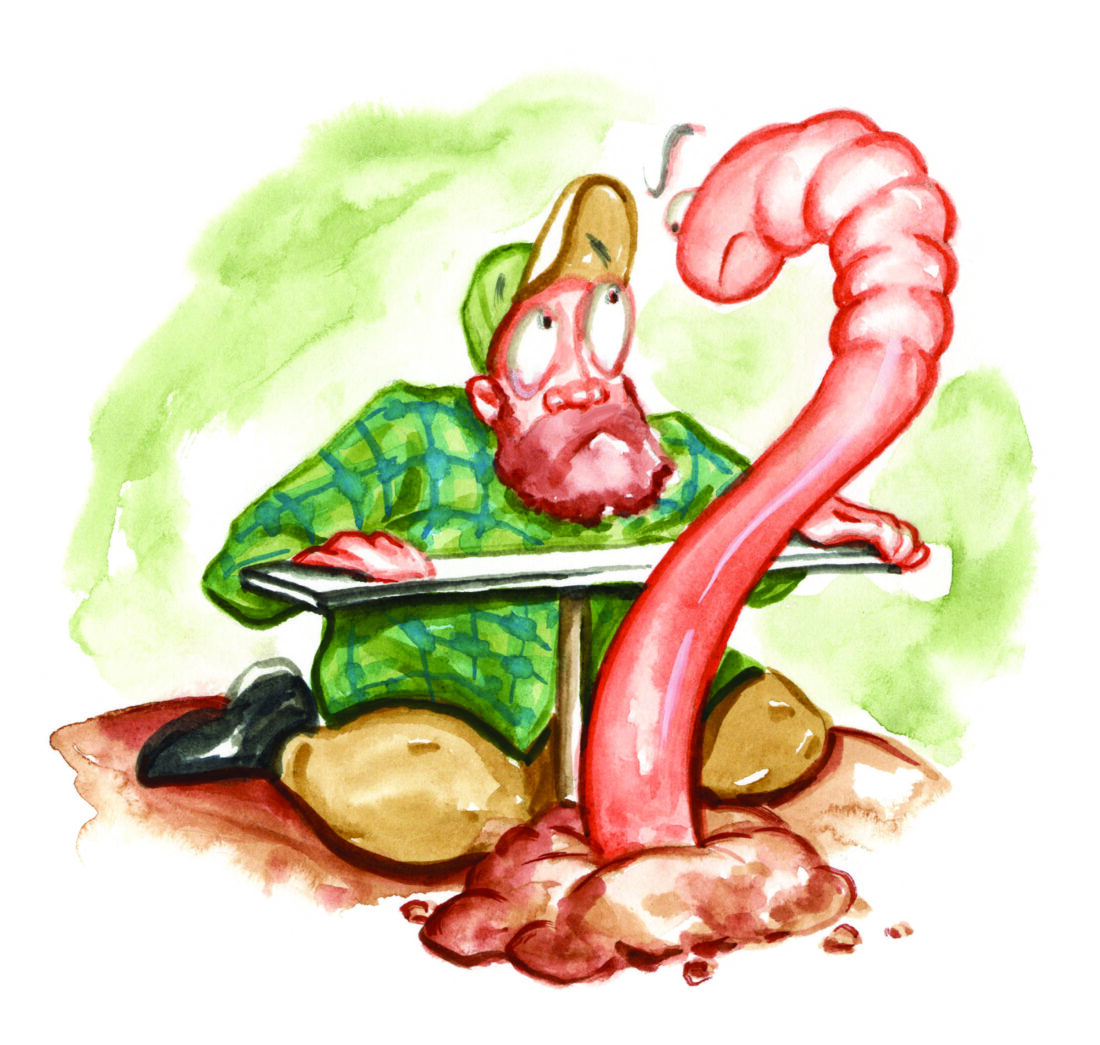
It’s probably quite bewildering when, as an earthworm, you sense the vibrations of an encroaching mole and squirm your way out of the soil to escape, only to emerge to a crowd of hundreds of humans cheering for your arrival. Such might be the case for the unwitting headliners at this year’s Worm Gruntin’ Festival (April 12) in Sopchoppy, when they wriggle up to find Gary Revell making waves in the dirt with his long piece of iron and a wooden stake. Revell is one of the last professional worm grunters, a dwindling vocation based on selling the critters for bait. For gruntin’ newbies, festival cofounder Bill Lowrie describes the piquant performance thusly: “far out.” When you witness the mass exodus of worms around Revell, you’ll get what he means. Stand close enough, and you might even feel the vibrations under your feet. In the afternoon, humans and earthworms alike will squirm away, the former to the festival’s live music sets and the latter back into the rich Panhandle dirt.
Georgia
For Future Reference
History
In the spring of 1975, the Cherokee Garden Library opened with about a hundred books stacked in the basement of the Atlanta Historical Society’s McElreath Hall. Fifty years later, that modest assemblage has grown to more than forty thousand artifacts that tell the region’s rich horticultural history. William Bartram’s 1791 Travels, for instance, records every bird, flower, and tree that the naturalist and artist encountered while traversing the South in the early 1770s. A recently digitized set of 850 photographs documents Black gardeners throughout generations. The library’s extensive seed catalogue represents hundreds of companies as far back as the 1830s. “If you want to know about the trends in ornamentals in the 1880s or what kind of okra was grown in Augusta in 1931, this is your source,” says Staci L. Catron, the library’s senior director. This spring, on the heels of a tour of private gardens on April 16, the library will toast to its half century of treasures on May 7 with a cocktail party and lecture headlined by Virginia-born interior designer Charlotte Moss. “There are no other comparable libraries in the Southeast that are open to the public,” Catron says. “No matter how rare they are, these resources are for all of us.”
Kentucky
A Passage Through Bluegrass Blooms
Gardens
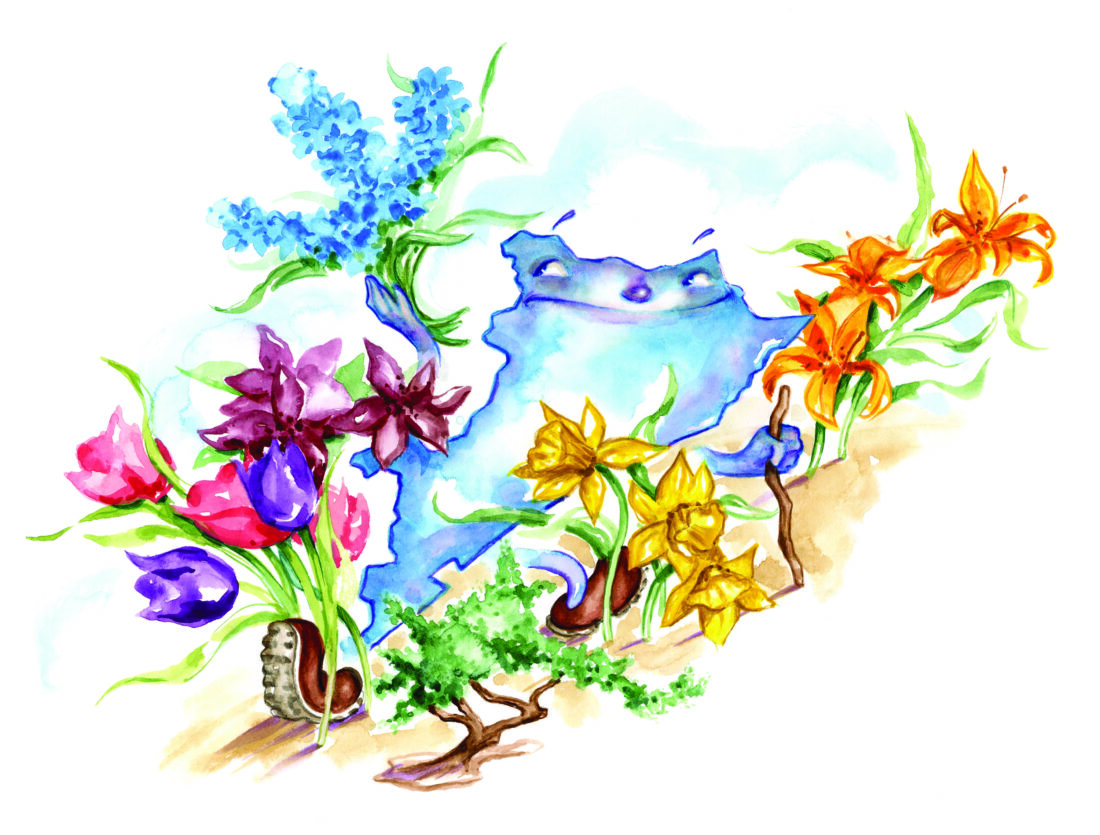
Bourbon, make some room on the proverbial shelf. Kentucky’s newest draw focuses on botany, with a journey that links twelve horticultural highlights across the Bluegrass State. The new Kentucky Garden Trail promises a botanical bonanza, taking visitors from a Technicolor display of six hundred daylily varieties at the Western Kentucky Botanical Garden in Owensboro to a collection of eighty-eight conifer species at Baker Arboretum in Bowling Green. The trail highlights both well-known gardens and arboretums and hidden gems, says Kim Hydes, executive director of Oldham County Tourism, who leads the project. But “it’s not including everybody and their brother,” she clarifies. “Even garden clubs didn’t know some of these places existed. There has to be something special about the place.” Take Louisville’s historic Cave Hill Cemetery, home to not only six hundred varieties of trees but also the graves of such notables as Muhammad Ali and KFC founder Colonel Harland Sanders. It’s just a few miles from the city’s Waterfront Botanical Gardens, with its charming bonsai collection. In spring, the trail really comes alive, with magnolias, dogwoods, and peonies flowering in April. That’s when Yew Dell Botanical Gardens in Oldham County celebrates its Big Bloom with thousands of snowdrops, daffodils, hyacinths, and tulips. In May, Bernheim Forest and Arboretum south of Louisville rolls out the green carpet for BloomFest across its sixteen thousand wooded acres. Hydes has heard from road-trippers rushing to collect stamps as part of the trail’s garden passport program; those visiting at least six sites get rewarded with seeds to plant at home.
Louisiana
True Storyville
Photography
In the heart of the French Quarter, the New Orleans Storyville Museum opened last fall to preserve and showcase the rich cultural heritage of New Orleans through the unique lens of Storyville, one of America’s early red-light districts, which existed from 1897 to 1917. “I wanted to share about what has been, but from an angle that people find interesting, while avoiding the salacious and keeping it respectful,” says founder Claus Sadlier. Beyond preserved gambling machines, mug shots, newspaper clippings, tea sets, and vintage bottles, the museum also hosts a dedicated gallery of the photographer E. J. Bellocq’s images of sex workers, printed from glass plates (a precursor to film). Daile Kaplan, a photography appraiser, collector, and curator, appeared as a specialist on Antiques Roadshow when, in 2001, the program featured rare Bellocq prints. Kaplan notes that Bellocq depicted his subjects with dignity. Photography was invented in the 1820s, “and by the 1840s and 1850s, hand-tinted daguerreotypes of young naked models objectified the female body,” Kaplan says. “Bellocq’s studies, however, with their playful interactions and interpersonal familiarities, depict female agency.”
neworleansstoryvillemuseum.com
Maryland
Art That Moves You
Outdoors
Every May, a fleet of fantastic vehicles roll across Baltimore. Crowds gawk as giant human-powered amphibious creations—such as a school bus–size crocodile with illuminated teeth, a banana split that seats four, and a massive pink poodle—compete in the Kinetic Sculpture Race. The contest, sponsored by the city’s American Visionary Art Museum, will mark its twenty-fifth anniversary this year on May 3. Over its fifteen-mile length, the course crosses pavement, mud, sand—and the Inner Harbor. David Hess, a public artist and metal sculptor, competes annually, joining his father, son, and friends on Team PLATY-PUS (short for Personal Long-range All Terrain Yacht Proven UnSafe). The team always assembles something suitably wacky, building on a chassis constructed decades ago from a junkyard pickup truck frame welded to a peloton of nine bicycles from Walmart. Although the eight-hour race can be grueling, Hess wouldn’t consider missing one. “It’s kind of a beautiful idea,” he says. “There’s no money, there’s no profit motive, there’s no sponsorship. You go around with your family and make people smile.”
Mississippi
Another Man’s Treasure
Antiques
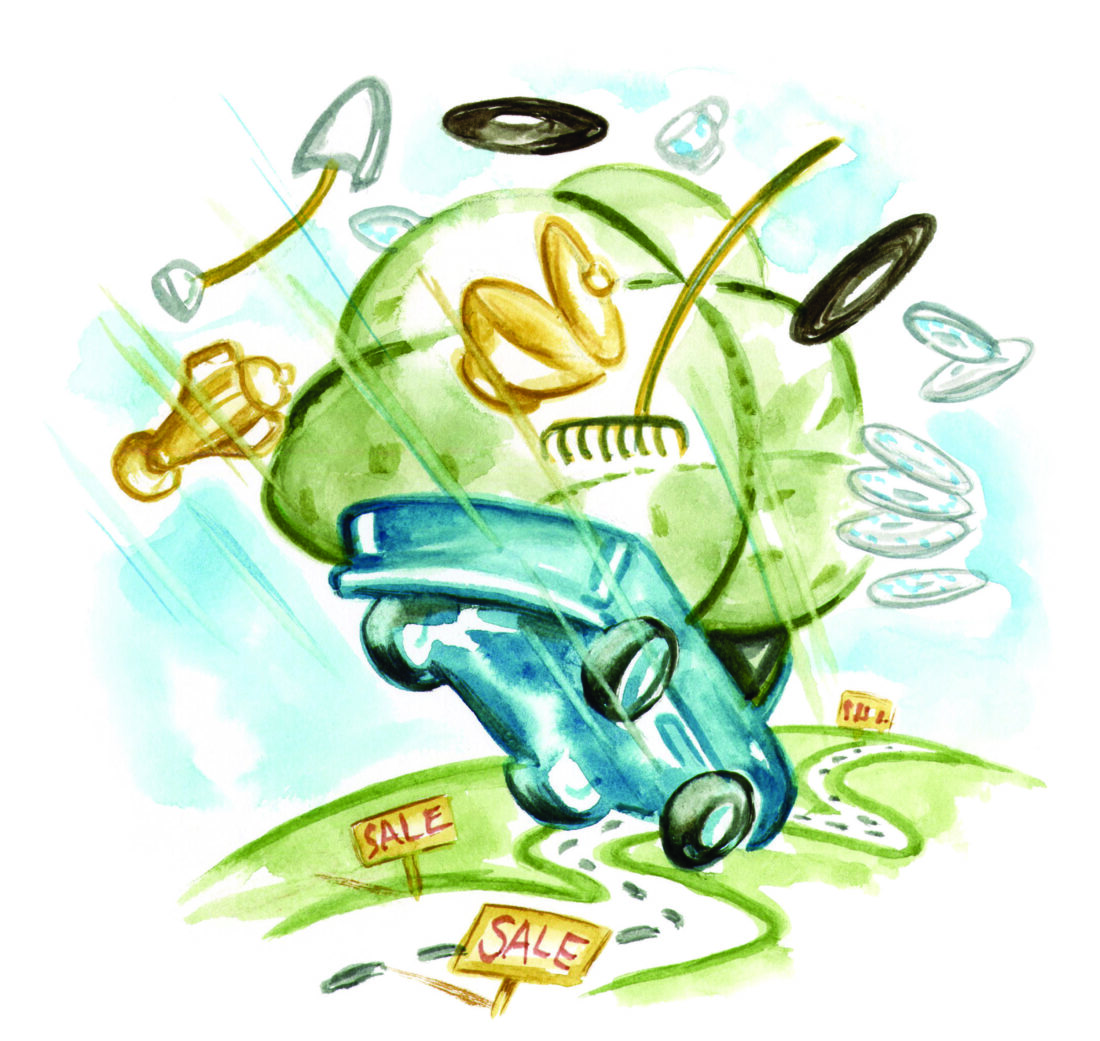
From antique glassware to old gardening tools, Picking 35’s seventy-five miles of other people’s stuff for sale draw treasure seekers to the stretch of central Mississippi’s Highway 35 that connects Vaiden, Carmack, Hesterville, Kosciusko, Carthage, and Walnut Grove. This year’s junk-in’ beckons on April 5; event organizer Pati Edwards says the giant yard sale holds mass appeal. “My young grandkids save their pennies all year for this,” she says, “and all ages from all over show up.” She advises using Picking’s downloadable map for efficient hunting, but avoiding getting stuck on specifics. “You find gems when you don’t know what you’re looking for,” she says. The route’s small towns are bonuses. “Stop to explore their shops, flea markets, and local flavors,” Edwards says, singling out the golden-fried yardbird at Carthage’s Chicken Nugget and the caramel milkshakes at Honey’s Place in Kosciusko as examples of “prize finds.”
North Carolina
Scene Setting
Art
Between the 1930s and his death in 2009, Andrew Wyeth painted Kuerner Farm, an idyllic patch of earth down the road from his studio in Chadds Ford, Pennsylvania, nearly a thousand times in nearly as many different ways. Snow Hill depicts dancers around a maypole in a winter scene; Karl menacingly portrays the farm’s owner; the ethereal watercolor Farm Pond pushes the farmhouse to the edge of the composition. “He was painting in a realist vein when artists in the 1950s and ’60s were painting abstractions,” says Allison Slaby, who along with cocurator Will Coleman compiled nearly fifty of Wyeth’s works for Winston-Salem’s Reynolda House Museum of American Art. The new exhibition, Andrew Wyeth at Kuerner Farm: The Eye of the Earth (through May 25), includes seven paintings from Wyeth’s private collection never before exhibited. “There’s a misconception that Wyeth’s work is easily accessible,” Slaby says. “But there’s a really intriguing complexity to it. It was just a different way of being modern.”
South Carolina
A Cut Above
Opening
Just before the South Carolina bladesmith Quintin Middleton launched his business in 2010, he shadowed the Charleston chef Craig Deihl in his restaurant Cypress, and then crafted him the perfect knife. From there, the popularity of his Middleton Made Knives soared—he’s made blades for the culinary likes of Sean Brock and Mike Lata—so much so that now, the chefs can come to him. Late last year, Middleton fulfilled his dream of opening a brick-and-mortar shop at Storehouse Nine in North Charleston. The 581 square feet represent the first African American–owned knife store in the state, and from Thursdays to Saturdays, visitors can peruse between thirty and forty of the one-of-a-kind beauties he forges in his workshop in the small nearby town of St. Stephen. “Some of my favorites for sale now are my Damascus blades, which have around two hundred layers of compressed steel,” he says. “It gives you this swirling effect, like rain dropping onto water.” Though he’ll keep producing his signature chef ’s knives, starting this spring and summer the shop will also carry his new line of outdoor knives called Geechee Boy, a nod to Middleton’s Gullah Geechee heritage.
Tennessee
The Show Goes On
Arts
As the Volunteer State’s oldest town—established in 1779, seventeen years before Tennessee was even granted statehood—Jonesborough has a long history of storytelling. “Southern Appalachia is so based in story, and we’ve hosted the National Storytelling Festival here for fifty years now,” says Amber Crumley, a Jonesborough native and the operations manager at the Jackson Theatre, which, from the 1920s until the 1960s, played a big role in the little town’s entertainment scene. But since then, “it was bought by two different people and divvied up” into storefronts, Crumley recalls. “At one point, it was a clothing shop with a dance studio in the back.” Finally, after all those renditions, the theater reopened its freshly revamped doors last fall to audiences once more. This spring, the Jackson will put on movie nights as it did in its heyday and host concerts, such as the Bellamy Brothers on May 25; in October, it will welcome events for the annual Storytelling Festival. “We’ve had a lot of people come back who grew up in the neighborhood and remember coming here when they were younger,” Crumley says. “Being able to add the stories of those
Texas
Dinner on the Range
Food
It’s fitting that Drew Knowles, the third great-grandson of John V. Farwell, one of the cofounders of the original XIT Ranch in the Texas Panhandle, is paying the family legacy forward at the dinner table. In 2020, Knowles and his wife, Abby, a chef who trained at Le Cordon Bleu, began acquiring parcels of land to raise cattle on, first in Colorado, then on a spread in nearby Channing, Texas, that was once a part of the historic XIT. “With the time we have left on this earth, Abby and I are dedicating our lives to ranching for future generations,” Knowles says. This sprawling cowboy landscape has also since become the backdrop for butchery classes and dinners for guests designed to entertain and to educate. The couple have hosted a women’s retreat and are planning spring events that will show off their ranch-raised Black Angus and American Wagyu.
Virginia
American Tale
Exhibition
If you aren’t yet familiar with the word, get ready: You’ll soon be seeing a whole lot of semiquincentennial. It means 250th, and the entire nation will be commemorating the United States’ big round milestone in 2026. Virginia is getting a jump on the celebration with Give Me Liberty, an exhibition opening at Richmond’s Virginia Museum of History and Culture in March and moving to the cosponsoring American Revolution Museum in Yorktown next year. The exhibit honors not only the founding fathers but also such unsung heroes as William “Billy” Flora, a free Black man who played a key role in defeating the British in the 1775 Battle of Great Bridge in Chesapeake. It also showcases artifacts like the whalebone paper cutter held by Virginian Patrick Henry when he gave his rabble-rousing “Give Me Liberty or Give Me Death” speech. The museum hopes to show how the Revolution’s ideals of democracy and freedom resonate today, says Jamie Bosket, president and CEO of the Richmond institution. “All Americans have a connection to this moment, and we need to make sure they see it.”
West Virginia
Farm to Bun
Food
The way Pete Pacelli describes it, there’s nothing complicated about his acclaimed Black Angus burger. “It starts with the beef,” he says. “We butcher a whole steer in the shop every Tuesday, and from that we do the grinds.” Then comes a kosher salt rub, a few minutes on the flattop grill, a slice of American cheese, and a lightly toasted brioche bun, followed by pickled red onions, romaine, and Duke’s mayonnaise. The burger is just one of the reasons to visit the small community of Capon Bridge, where Pacelli’s pilgrimage-worthy Farmer’s Daughter Market and Butcher marks its tenth anniversary this year. The whole-animal butchery draws customers from all over the region—The Washington Post called its burgers “world class”—for its pork, lamb, and beef, all raised within forty miles of the store. The lunch menu is limited to that burger, an Italian sandwich with house-made charcuterie, and a special. But a word of warning: The kitchen closes at 3:00 p.m., after which Pacelli reluctantly turns away latecomers. “I have broken some hearts,” he admits.
—Jenny Adams, Larry Bleiberg, Helen Bradshaw, Caroline Sanders Clements, Haskell Harris, Jennifer Kornegay, and Lindsey Liles

